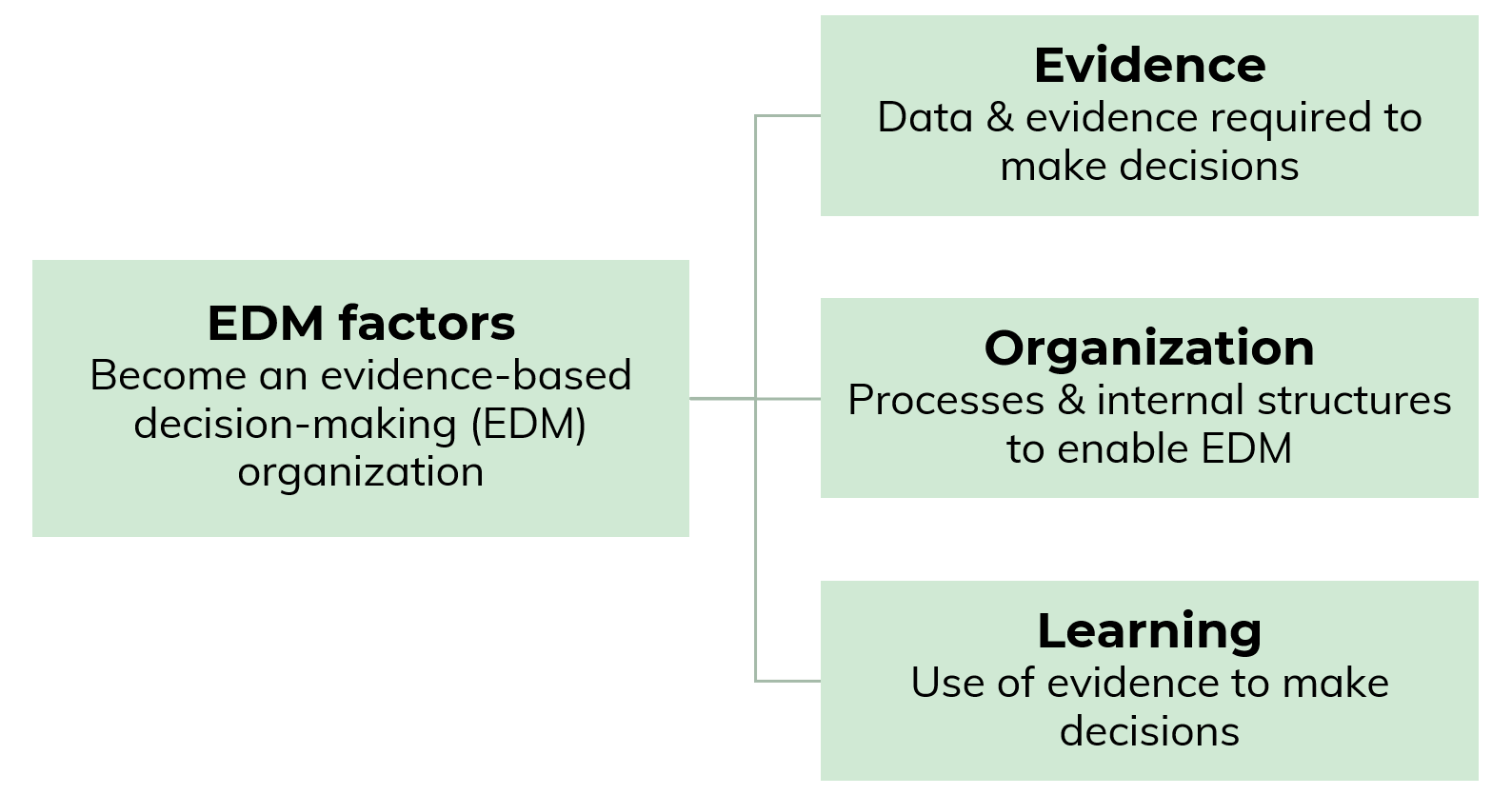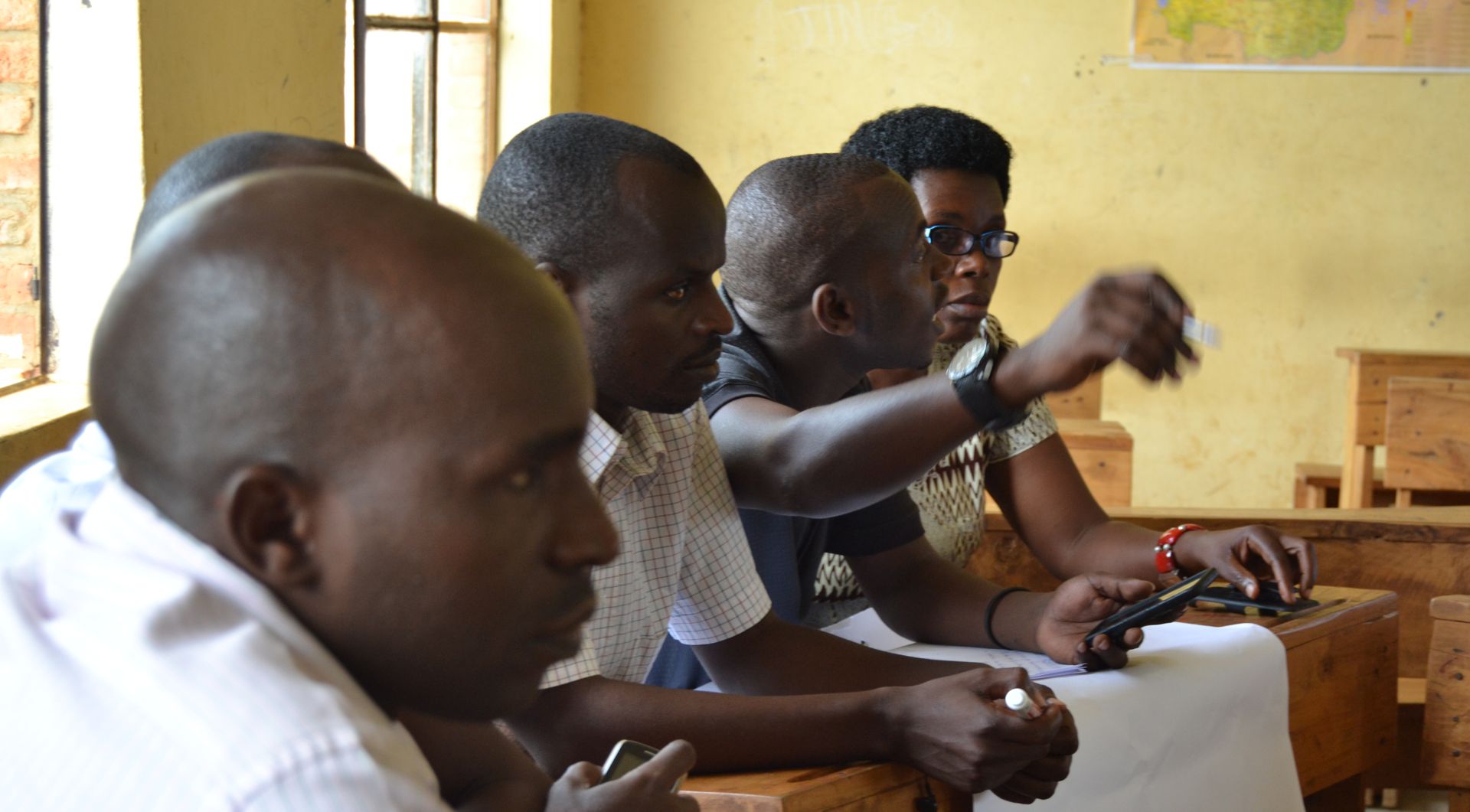The idea behind the ME&L diagnostic tool is based on a simple observation. Development partners are experts at implementing programs, but they also need to show evidence of impact. They often use ME&L as a tool to report on progress or impact, but lack the resources to design effective ME&L strategies that put learning at the core of program design and decision-making. This means they are missing out on opportunities to use their data to generate learning and make evidence-based decisions that would in turn enhance their impact.
Our diagnostic tool lends organizations the expertise Laterite has built in research design, data collection and analysis, to support them not only to improve their ME&L function but also use it to extend their impact.
| What’s ME&L?
ME&L stands for Monitoring, Evaluation and Learning. Monitoring helps implementers keep track of how program activities are really working. It allows program managers to spot and correct issues in good time. Evaluation shows what works and what doesn’t. It answers questions about the effect or impact of the program, the beneficiaries, or operational challenges. For example, an evaluation may involve reviewing key program indicators before and after implementation. Learning enables organizations to provide feedback and course corrections to the program, and to generate lessons for future programs. A robust ME&L strategy is critical to ensuring programs are implemented smoothly and achieve their intended impact. Programs and ME&L go hand-in-hand. |
Why diagnostics?
The diagnostic offers implementing partners a unique external perspective on how they implement their programs and ME&L plans. It is guided by Laterite’s Evidence-Based Decision (EDM) framework. The framework helps us identify where there may be gaps in the ME&L teams, processes and systems, and work together to develop practical solutions. The EDM framework helps us answer the following:
- are implementing partners asking the right questions? Are they collecting the right data, given their learning objectives?
- how are implementing partners using this evidence to make decisions?
- do implementing partners have the right processes and structures in place to generate and use evidence in their decisions?
Laterite’s evidence-based decision-making (EDM) framework

What does a diagnostic involve?
Rolling out a ME&L diagnostic means working in close collaboration with the implementing partner’s team during a month-long period. In this time our team gathers as much knowledge as possible on: the program’s theory of change and logical framework, what data the partner collects and how they measure indicators, data systems, processes of teamwork and communication, etc. A diagnostic process typically involves interactive workshops, interviews with all sorts of team members (not only directors or program managers, but also program implementation team members, advisors, ME&L officers, etc.) and field visits to watch the program in action.
By the end of the diagnostics cycle, our team is able to provide:
- a comprehensive description of the program, its theory of change and ME&L plan;
- an actionable set of recommendations to improve the implementation process and the ME&L function so as to better integrate research and learning into program design and implementation; and
- suggestions of learning opportunities from the program.
We can also identify key areas where Laterite may be able to provide technical support if needed.
Our experience and lessons learned
To date, we have deployed our ME&L diagnostic tool in partnership with organizations working in education, agriculture, gender and nutrition in East Africa. For example, our Rwanda office has led diagnostics with five implementing partners of the Mastercard Foundation’s Leaders in Teaching initiative as part of our work as learning partners.
Our team has learned that key ingredients for a successful diagnostic include:
- Collaboration: Working closely with our partners, in an environment of trust, where both sides can share thoughts and information freely.
- Flexibility: The ability to adjust our approach to our partner’s needs, priorities and constraints, because only tailored recommendations are actionable.
- Early implementation: a diagnostic adds more value when run at the start of a program, or right after a pilot. At this point, program details and the ME&L strategy can still be adjusted.
- Ongoing contact: Follow-up meetings where we discuss observations, suggestions and decide on next steps.
Implementing diagnostics at the initiative-level also allowed us to identify overlaps, synergies and common challenges across implementing partners. This opens up a range of possibilities for diagnostics. For example, we could explore ways to better connect each partner’s ME&L strategy with the initiative’s overall research objectives to achieve even greater impact.
Want to know more about our work with diagnostics?
> Read about Laterite Kenya’s work on the IGNITE project with Tanager.
This blog was written by Laura Le Saux, Laterite Research Associate based in Kigali, Rwanda.
